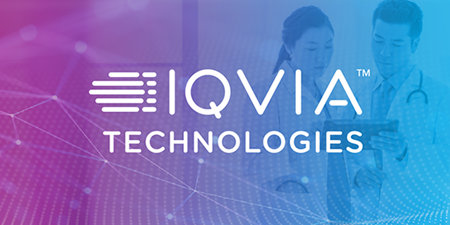IQVIA's Tal Rosenberg Discusses Digital Trends in Healthcare
By Heather MacFayden
May 27, 2019
AI, Artificial Intelligence, Cloud, customer engagement, data, digital, Digital Transformation, Digital Trends, Engagement, machine learning, technology, Voice
Life science and healthcare have lagged behind other industries when it comes to digital transformation, but evolution is on the horizon. Experts are predicting dramatic changes over the next 20 years, driven by emerging technologies and patient empowerment. The big tech companies—Google, Apple, Amazon, and Microsoft—are shifting their focus to the life science and healthcare industry. Artificial Intelligence (AI) is advancing at an incredible rate, information is more easily accessible than ever before, and end-users are demanding faster and more personalized responses. These factors are putting pressure on companies within the industry to transform their business models.
the next 20 years, driven by emerging technologies and patient empowerment. The big tech companies—Google, Apple, Amazon, and Microsoft—are shifting their focus to the life science and healthcare industry. Artificial Intelligence (AI) is advancing at an incredible rate, information is more easily accessible than ever before, and end-users are demanding faster and more personalized responses. These factors are putting pressure on companies within the industry to transform their business models.
I recently had the opportunity to speak with Tal Rosenberg, the senior vice president, Global Technology Solutions at IQVIA, about the digital trends he sees in the industry and how IQVIA is helping their customers respond. IQVIA is the largest provider of data, technology, consulting, and services in the healthcare industry, employing more than 58,000 people in 100 countries. Their unique advantage is due to their domain expertise, unparalleled data, advanced analytics, and transformative technologies.
Download MP3
Tal provided his thoughts and insights on how technology, data, and analytics are impacting the healthcare industry and the role IQVIA plays in the sector.
“IQVIA finds itself in the midst of the fourth industrial revolution... we are in the unique position of being in the intersection of healthcare and technology to really help drive innovation and reinvent what healthcare looks like. I think it’s a very interesting time in our industry given how, on one hand, the portfolio of our customers is really changing—more specialty, more rare disease, more unique launches versus the big blockbusters, primary cares of the past—and at the same time, evolving the landscape in terms of stakeholders that are really influencing what we, as patients, actually get to consume — to treat ourselves. It’s no longer just the relationship between the rep and the physician, but a lot more in terms of the payers, and providers, caregivers, etc. I think the other big trend that is influencing is that there is an increasing level of pressure on the industry to accelerate clinical development. [For example,] How do we bring new molecules [Molecular Therapy] to treat patients faster? That is something, again, the transformation has been upon us to help make that a reality.“
According to Tal, IQVIA is in a unique position within the industry because they have been managing and hosting data for the last sixty years, and have been innovating and bringing new technologies to the market for the last decade. “Taking these two things together is enabling a whole new level of insight and capabilities to help really transform our industry—bringing drugs, new molecules to market faster and being able to make sure that these drugs end up in the hands of the right patient. In the past, the industry was trying to figure out how to make sense of their data, especially trying to make sense of how they regard their technology investment—a lot of silos which companies were trying to connect the dots and where IQVIA is playing a big role is we are actually connecting those dots. We are bringing all the data together, we are infusing the data into the technology, and with that, we are really enabling our customers to make better, faster decisions pretty much every time.”
One of IQVIA’s latest innovations is called Orchestrated Customer Engagement (OCE), which focuses on the commercial ecosystem. As the name implies, OCE helps orchestrate customer touchpoints and manages the end-to-end process of customer engagement. The solution helps companies break down the silos between sales, marketing, medical, and other functions. According to Tal, “The word orchestration is in the heart of what we do. We like to call it the era of orchestration which is how you really coordinate people, how do you connect people, and how you enable intelligent workflows for people by deploying technology, by deploying analytics, by deploying unique datasets, to again inform a better experience for customers.“
AI and machine learning are infiltrating our everyday lives in tangible ways—from the targeted ads we see as we browse websites, to our Google Home and Alexa virtual assistants. The advancements and possibilities that AI offers are quite exciting, and I asked Tal what he felt the role of AI and machine learning played in both IQVIA’s solutions and the healthcare industry.
“I think the role of AI and machine learning is tremendous to really helps us make sense of the data. We’ve been in the data business for many, many years, but it’s no longer just about the data that we have, its about the data that exists out there alongside what we have. But, how do you make sense of it all? How do you really connect it? There are so many different applications, so many different devices that are generating terabytes and terabytes of data, a day, per patient. So, how do you really get the right level of insight in order to detect a diagnostic in advance, so you can take action? Or, to detect what physicians are best to be recruited to support these clinical trials? Or, what physicians are best to treat these cohorts of patients? Across IQVIA right now, we have over 120 AI and machine learning projects that are at different levels of maturity, that are helping us to make informed decisions in real time. I think AI and ML are going to continue to be important, and actually, are only going to increase as the proliferation of data sources and the velocity of data is exploding all around us.”
The healthcare landscape is changing, and the ways that healthcare providers support and communicate with patients is changing. The power of the smartphone has given patients access to information and tools that are closing the gap between patients and pharmaceutical companies. Companies need to adapt to these changes, both culturally and technologically, to be competitive. I was curious to hear how IQVIA’s customers were responding to their solutions.
“I think the industry has been thirsty, I would say, for new ways of doing things that they have done yesterday. A lot of the time, everyone’s talking about digital transformation, but the question is, what does it really mean? For a while, it meant automation, and cutting costs, and doing things faster—which is all important. But, the true application of digital transformation is how do you really disrupt existing ways of doing things, reinventing patient models, and enabling patients to receive care in ways that were never really possible? They were never really possible because we didn’t have the data, and if we had the data, we didn’t know how to access it, or because the technology platforms did not enable the connectivity and the experience that we have today. So, the industry has been thirsty for change—thirsty for innovation—and I think that we are in the right time, and the right place, really bringing our domain expertise, and all power data…the analytics that we are driving from those two, then integrating it with technology that creates a whole new level of engagement—and that’s why we see a pretty remarkable uptake from our prior technology portfolio.”
IQVIA continues to innovate and advance its solutions. In our conversation, Tal identified two areas he felt most important:
-
Data Science Cloud—improved access, syndication, and curation of the data
-
Patient Engagement—closing the gap between patient and manufacturers
“There are a lot of things that we are working on to continue to push ourselves in the industry with new innovation. I will give you two big things that I think are important. One, building on what we said earlier about the continuous growth of data sources and the need for better ways to access the data, to synthesize the data, to curate the data, and do all that to enable better decision making. We are basically taking what we built over the last 12 years, as internal capabilities for us to manage the largest volumes of data that exist in the industry, and we are planning it in the context of our customers, pulling in their data and other data sources that are available. We’re calling it the Data Science Cloud, which means what it says on the box. It’s basically all the data that is available in the industry…so, how we manage data, how we enable that for first-in-class AI. [It’s] one big thing that we’re doing, but more is coming in terms of market-ready capabilities. The second, which is as exciting as the first, is the broad category of patient engagement, which I think, is an extremely interesting space on how you bring manufacturers of drugs closer to patients, or patients closer to manufacturers, as we all become a lot smarter. How do you really take the digital transformation, and really enable it through digital channels, that connectivity, and call it patient engagement? Patient engagement means many different things in many different settings. Patient engagement can mean, what does it look like for patients during the clinical trials? And it could mean, in the commercial settings, how does the patient stay on a therapy, adhering to it, behavior modification, etc. So, more to come on that. It’s a very exciting space for all of us in the industry, and especially for patients.”
Ending Notes
Patients are becoming smarter, more informed, and are taking a more active role in their healthcare. IQVIA’s vision is to drive healthcare forward, and their solutions do that by helping their customers gather insights and actionable results—providing value and real outcomes.

Heather MacFayden
Heather has been with Falcon-Software since its inception in 1993 (26 years). She currently serves as the Vice-President, the Director of Production, and as the company’s Senior CMS Analyst. Heather oversees all of Falcon-Software's production teams. From design, to development, and go live, Heather monitors the implementation pulse of the company.